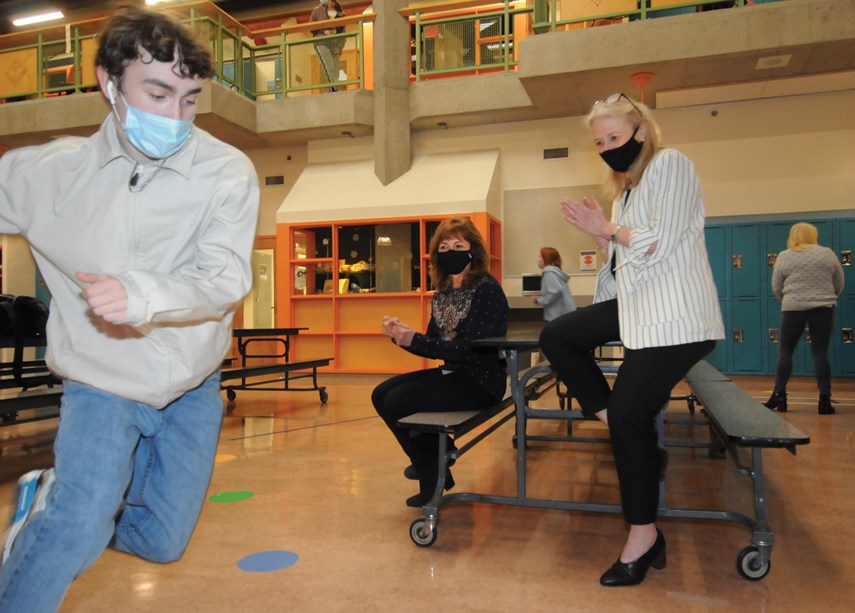The middle of a pandemic that has most of us glued to our computer screens, posteriors firmly planted, might not be the most obvious time to press ahead with a program aimed at getting school kids moving.
But for a group of West Vancouver educators, the impacts of COVID on the lives of local kids and teens make incorporating physical activity into their days even more important.
“If you ask anyone what’s a strategy that you’ve been doing during this very challenging time, getting active and going outside – that’s a key thing that adults are doing right now,” said Diane Nelson, director of instruction for the West Vancouver school district. For kids and teens, “the concept is the same,” she said. “This is something we should be teaching our kids.”
For Nelson and her team of physical literacy educators, including Erin Crawford and Amber Pascual, getting kids to be more active by teaching them fundamental skills is a project that started five years ago in West Vancouver.
Researchers realized that besides a trend to “bubble wrapping” by parents, modelling of sedentary behaviour by adults and too much time spent in front of computer screens, there was another reason kids weren’t active: some of them didn’t know how.
Teaching fundamental skills
That’s when Nelson started a program in West Vancouver primary grades aimed at teaching children basic skills, including running, hopping, throwing, kicking a ball and walking backwards heel-to-toe.
At the beginning of the program, very few of the kids tested could do all five tasks competently.
“It was really shocking,” said Nelson.
But when they were taught how, they showed dramatic improvements.
In some classrooms, that meant kids walking through "agility ladders" on the floor. In others, the program has involved throwing balls – or a rolled-up pair of socks – against a target.
By teaching kids those skills – instead of assuming they already know how to do it – students learn fundamentals, said Nelson, which will be key to participating in sports and other physical activities later in life.
Just as in reading, writing and math, there are skills in physical activity that need to be taught, said Nelson: knowing how to throw a ball accurately, for instance.
When COVID hit a year ago, Nelson said one aspect of physical literacy that became even more important was the impact of even simple movements on mental health. Teachers noticed that getting kids up and moving had direct benefits on kids’ ability to stay focused and feel good in the classroom.
Physical movement also benefits mental health
In some cases, exercises were designed to incorporate social and emotional learning along with physical well-being, like getting two kids to take a short walk together while asking each other questions ranging from “What is the best thing that happened to you in the past week?” to “What’s the hardest you’ve ever worked?”
This January, educators also began bringing physical literacy activities into some secondary school settings in West Vancouver. Most of the exercises are simple activities that can be done in a five-minute break, says Nelson: desk pushups or wall sits or lunges, for instance.
Despite the time pressures of this year’s quarter system, “what we are trying to prove, through those teachers who are giving this a try, is that when you give the kids a five-minute break here and there within those 160-minute periods, you're actually gaining more achievement, focus, and quality in what they're able to learn and deliver because they're having these breaks,” she said.
Nelson said she’s hoping in future to partner with some researchers who will be able to measure exactly how such movement activities impact students’ focus and mental well-being.
Currently, there are 15 teachers at the three high schools who are involved in the project. Response from students has been positive, said Nelson. “They’re asking ‘When do we get our brain breaks?’”



